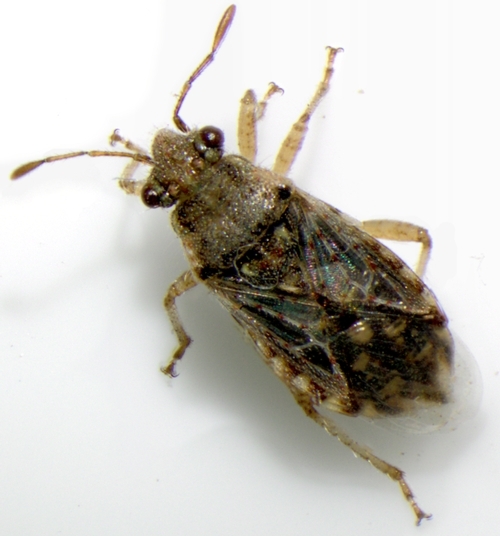- Author: Beth Wray
- Author: Tami Reece
- Author: Sophia Stevens
- Editor: Jennifer Hopkins
UC Master Gardeners, whose mission is to extend research-based knowledge and information on home horticulture, pest management, and sustainable landscape practices to the residents of San Luis Obispo County, is now officially in Paso Robles, welcoming residents to visit their new demonstration garden at the Centennial Park. On Saturday, Aug. 12, the UC Master Gardeners of San Luis Obispo County will host an Open House from 8 to 11 a.m. at 600 Nickerson Drive in Paso Robles.
The garden project has been two years in the making, beginning in August 2020 when the initial conversations started with the City of Paso Robles and the University of California Regents for the UC Master Gardener Program of San Luis Obispo County to take responsibility for the 3,500-square-foot garden space at the city's Centennial Park.
“The City of Paso Robles is thrilled to partner with the Master Gardeners of SLO County to present a beautifully renewed Centennial Park Demonstration Garden for the benefit, enjoyment and education of our community,” said Community Services Director Angelica Fortin. “As we continue to develop this 3,500-square-foot garden space together, we will focus on demonstrating water conservation, providing food to the hungry and inviting community interaction. We believe the garden will become a special place for community members to learn and grow together toward these common goals.”
UC Master Gardener volunteers will be stationed in the garden to discuss the eight different garden plots, which reflect the joint goals of the two organizations for this garden space: developing community green spaces, demonstrating water-wise gardening practices, donating food to local food banks, and providing opportunities for community education.
Soon, workshops will be scheduled at the garden, with topics such as home landscape design, pest identification, and management, pruning, what plants do and don't grow well locally, as well as other topics, keeping in mind the special climate requirements of North County. Workshop topics at the new garden will also be selected based on survey results collected at the upcoming Open House in August. Input from the community on preferred format and scheduling is encouraged and appreciated.
Future plans for the garden will include monthly open garden days, where UC Master Gardeners will be in the Centennial Park Demonstration Garden to answer questions.
“We're so thrilled to engage with the North County and help support their gardening success,” said Maria Murrietta, program coordinator for the UC Master Gardener Program of SLO County. “While we've had a strong presence in San Luis Obispo at the Garden of the Seven Sisters Demonstration Garden, this new garden offers a second beautiful place to host UC Master Gardener Program events and engage with home gardeners who have questions or want to learn more about gardening.”
For more information about the UC Master Gardeners of San Luis Obispo County, call (805) 781-5939 or visit ucanr.edu/sites/mgslo/.
- Author: Amy Breschini

Grass bug, Arhyssus sp. (Photo by Rodney Cooper, USDA-ARS, Shafter)
The following information is from Dr. Surendra Dara, UCCE Santa Barbara and San Luis Obispo
Several specimens of grass bugs have been brought to our office in the recent weeks. These are of varying sizes (about 7-12 mm), but identified by the CDFA systematist, Rosser Garrison as Arhyssus sp. They belong to the family Rhopalidae (Order Hemiptera), members of which are commonly known as scentless plant bugs. They mostly feed on xeric (require less water or adapted to dry habitats) and other weed plants. Sometimes they enter homes in search of protected places.
Grass bugs are similar to coreids or leaf-footed bugs except they do not have well-developed scent glands and smaller than coreids. These can be confused with false chinch bug, Nysius raphanus (family Lygaeidae) which are also found in weedy or grassy areas and migrate to homes.
Damage: They usually do not cause any serious damage in the home gardens. However, they can be a nuisance when entering the homes in large numbers.
Management: Sealing the windows, keeping the doors closed or using the screen doors, and vacuuming are the best practices to keep them out or clean them up.
- Author: Chris Cocchiaro

"We had a rancher (from Paso West Side- near the lakes) send us a picture of these crazy mushrooms growing on Live Oaks and I looked it up..."
After a little research, here is what she found:
"I believe it is Hericium erinaceus which has several common names: "lions mane", "monkey head", "bearded tooth". One reference said that there are seven different genuses in which have the same “toothed” appearances. It is also found in the Bay area, and can be found on American Beech trees."
As with most mushrooms, there are species with look-a-likes, so assume it's poisonous, unless you have an experienced mycologist with you for proper identification.
Here's some photos from Berkeley : http://calphotos.berkeley.edu/cgi/img_query?stat=BROWSE&query_src=photos_fungi_sci&where-genre=Fungi&where-taxon=Hericium+erinaceus&title_tag=Hericium+erinaceus
Thanks Amy for supplying all of us with this great Topic!









